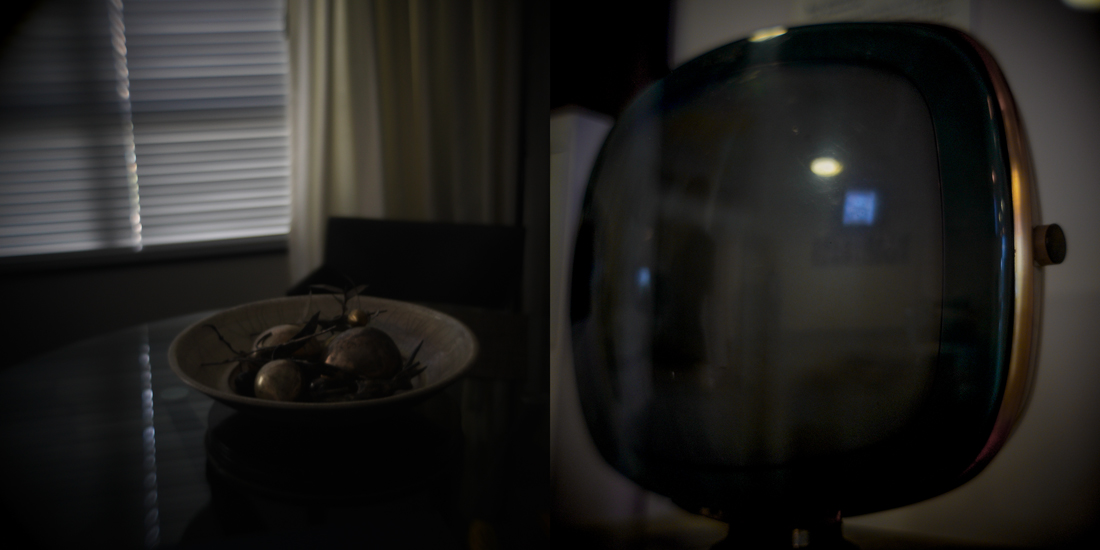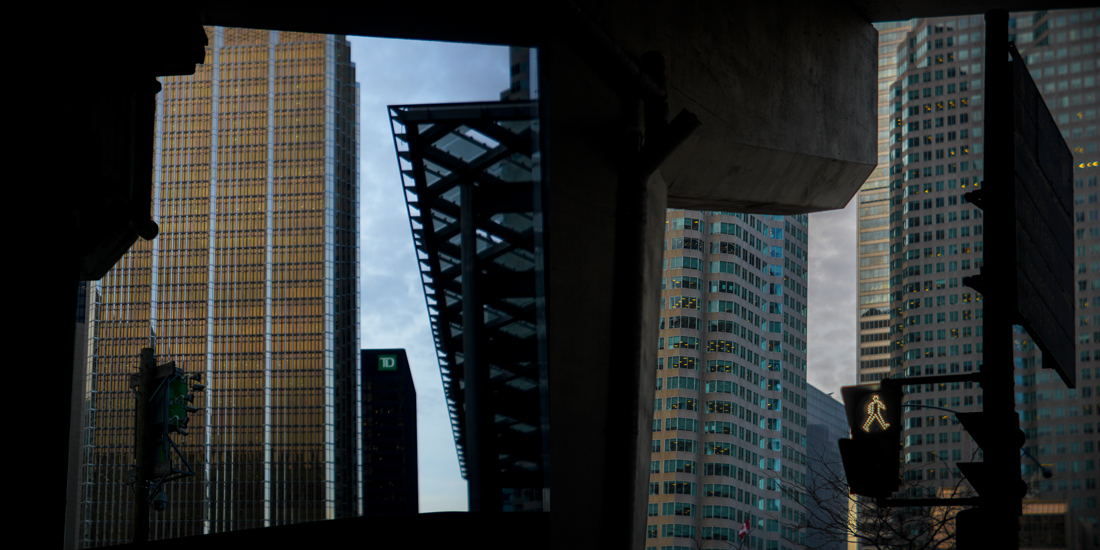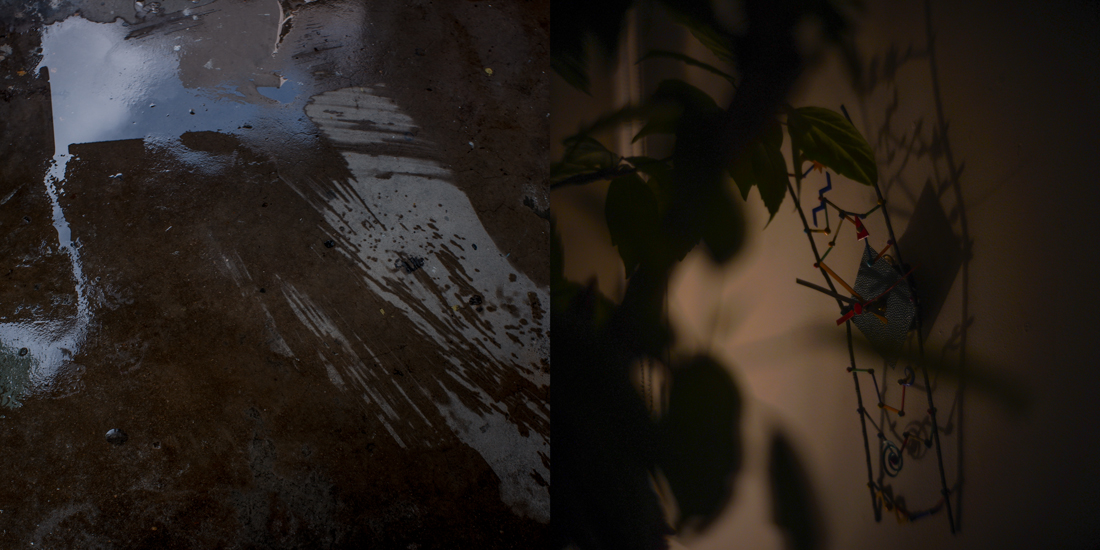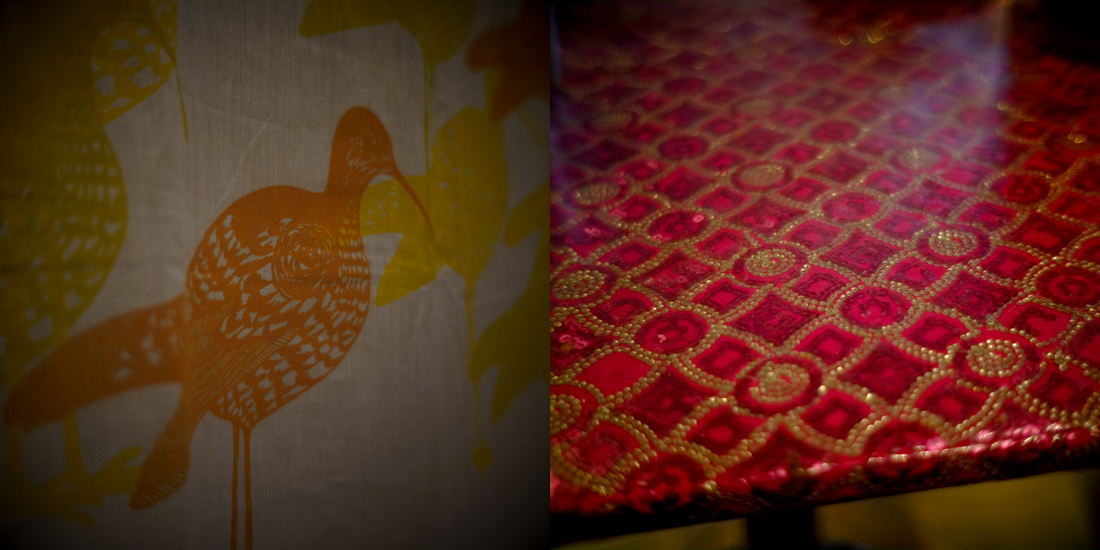
DOUBLE DOUBLE
Writings/ Photographs/ Poetry/ Archives
A Holly Lee and Lee Ka-sing online magazine. Published on Fridays.
李家昇黃楚喬網上雜誌,逢星期五出版
++++++++++++++++++++++++++
CURRENT WORK
A frozen reservoir melting away
A collage poem by Holly Lee, compiled from clippings from NYT
A frozen reservoir melting away
Love, Android style, sexy and confusing
Skating through history
When your commanding officer is your breath
Furloughed workers turning to pawnshops
Stocking up on the radon water
Raised on a revolution, he now teaches code
Filling the roster of your house-repair team
A soulful Robot made to be hugged
Pushing past her comfort zone
Big tech is watching
I did not write the poem. For a while last year, in the right mood I clipped headlines from the Sunday New York Times, rearranged the sequence and formed into a poem. It was surprisingly refreshing. It has its own voice - a voice uniquely our time.
(From New York Times, January 20, 2019)
6 FEET TABLETOP
A photogram and a print

The Photogram, untitled, by Holly Lee
Gelatin silver photograph, RC paper, 19" x 24"
(circa 1995)
The Print "FOUR STANZAS OF A POEM", by Lee Ka-sing
Offset print, 22"x31", recycle paper, 40 editions
(work 1993)
"FOUR STANZAS OF A POEM” was a work from my solo exhibition “THIRTY-ONE PHOTOGRAPHS”, held in 1993 at Hong Kong Arts Centre.
The work was in fact a commissioned assignment for a company brochure of a paper company. It was a giant size brochure, with the dimension of 22”x15.5”. The work was featured as a double spread page (22"x31"). I was working with a given theme: RECYCLE. I wrote the texts in Chinese on a small notepad. It was blown up, and printed on top of the photograph in gold colour.
In the “THIRTY-ONE PHOTOGRAPHS” exhibition catalogue, I “recycled” this small piece of writing for the purpose of an artist statement, and with someone’s help for the English translation (I regrettably forgot the person's name), I quote the text at below:
"I discussed with a friend about the relationship between a river and its water. We came to Duchamp, particularly about his viewpoint on ready-made objects. Object and its environment is equivalent to a swimming fish and a river, you could not simply separate them however. That's why I came to like Barbara Kruger afterwards. A graphic designer joined in. He asked me about the concept of using recycling images. I replied, to change a piece of rock into a photograph, or to change a rock photograph into a piece of rock is a matter of order. Then we discontinued to discuss anything about heaviness. I think he must have seen R. Magritte. I supposed, when I mentioned René, he should have known René's pipe well even though I'd left out Magritte's title. This way, we'd come back to the original point of river and its water."
The 6 Feet Tabletop, is at our studio-home-salon-gallery space, facing a large window. I built the tabletop in 2002, when we were running an exhibition space on Queen Street West.
CURRENT WORK
Sushi Grass in Paradise (A story)
written by Holly Lee
with photographs by Lee Ka-sing

(46) The Initial Anatomy of Photo Museums
Mr. Bento did not have the idea of bringing up news of Robert Frank’s death would create another diversion, dragging the HOSOP team further away from studying what photo museums world-wide would gather in their collections. In today’s gathering he must stress on focusing, herding them back to the aim of this meeting. In fact, everyone had done some homework, and after a lengthy discussion, they came to the following consensus. Wandy, with her iPad on her lap, quickly typed down the points.
• Most photo museums have historical and contemporary photography in their collection.
• Some perform acquisition of other important private photo collections in the world.
• Photo collection focusing on socially and politically charged images.
• Some collect works only by young photographers, or under certain ages, i.e. 35 or below.
• Some also organize exhibitions and publications, setting up on-going discussion on the role that photograph plays in our digital age.
• Some specialize in collecting certain genre of photography, say architecture, landscape, portraiture, abstract or experimental work…
• Some museums also collect historic cameras and photographic equipments in their holdings. Rotating installations that trace the history of photography from the collection.
• A number of them focus on the digital era, acquiring video, multi-media work along side with photographs.
Then there are also contemporary museums collecting 'Time-based media art', visual work that requires technology to be experienced. In the present almost ninety-nine percent of photography is produced digitally, would it be necessary to differentiate digital photography versus analog photography? Now they have a clearer view of roughly what photo museums of the world collect, would it help them to mold HOSOP? In fact, the more they learned, the more they felt their inadequacy to create a truly unique photo museum. They need to bring in more revolutionary ideas.
“I forgot to mention,” George said, “the opening of Fotografiska in New York. Has anybody heard of Fotografiska yet?” seeing no head nodding he continued, “it was founded in 2010 by brothers Jan and Per Broman in Stockholm and boasted to be the largest photo museum of the world. It differs from other photo museums as they only use the gorgeous space to organize exhibitions, practically several stellar shows at the same time. The exhibitions are developed directly with the artists, estates, collections and galleries. As their motto says, ‘We want to encourage and initiate change. We do so through our five core values: Innovation, Inclusion, Inspiration, Sustainability and Relevance.’ It wanted to be an inclusive hub for a connected creative, photo-loving community. In fact, Fotografiska wants you to experience a dynamic mix of world-class photography, cultural events and retail alongside epicurean dining created by award-winning restaurants. What’s more, this new addition in New York is open 363 days, from 9 am to 11 pm. The reason I mention this is to point out that museums are no longer just archival storage places, they are adapting and changing, more reinvigorated, more geared to the 21st century - the lifestyle of consuming.”
"Sushi Grass in Paradise" is an on-going story. To read the full length version with previous chapters, please visit- https://oceanpounds.com/blogs/sushi-grass-in-paradise
CURRENT WORK
Lee Ka-sing
Fragments written before New Year Eve
from DUET series, 2019

The party after

Listen to the memoir of a contemporary musician on Highway 401

Tree with light ornaments

Home movie after a Sunday brunch

兩件精緻的哀傷 (Google tr. Two pieces of exquisite sorrow)

設計給墜吊物的陷井 (Google tr. Trap for a hanging object)

前面有兩棵大樹的巨型佈幕 (Google tr. Giant curtain with two big trees in front)

寫給城市的協奏曲 (Google tr. Concerto for the city)

有陽光透進來的天橋底部 (Google tr. There is sunlight at the bottom of the overpass)

關於時間的其中兩種傳繹 (Google tr. Two interpretations of time)

有著金邊的閱讀物 (Google tr. Book with golden edges)

啄食東方的谷粒 (Google tr. Pecking grain from the east)

建築物群中的階級鬥爭 (Google tr. The class struggle inside a building complex)
++++++++++++++++++++++++++
DOUBLE DOUBLE
Issue 0103-2020
A Holly Lee and Lee Ka-sing online magazine. Published on Fridays.
Published by Ocean and Pounds and archived at oceanpounds.com
All rights Reserved.
Selective items in this publication are available at the OCEAN POUNDS online shop. For items featured in CURRENT WORK, VINTAGE, ARTIFACT, PUBLICATION, OBJECT, BOOKSCAPE and COLLECTION, please send a request to: mail@oceanpounds.com.
If you are a researcher or writer and want to use the material, please write us in advance. Some of the materials might have different level of copyrights involved.
Not to miss a single issue, please subscribe to DOUBLE DOUBLE Release Notification. Visit - http://doubledouble.org
DOUBLE DOUBLE previous issues were archived at -
https://oceanpounds.com/blogs/doubledouble
leekasing.com is a portal website for current and earlier works. Apart from exhibitions, Holly and Ka-sing use extensively web platforms to display photography and writing projects. Contact us for a detail list of links.
Holly and Ka-sing currently live in Toronto with their daughter Iris, and their cat Sukimoto.
++++++++++++++++++++++++++
